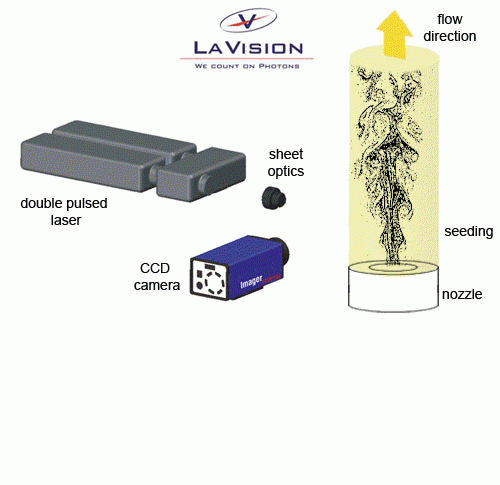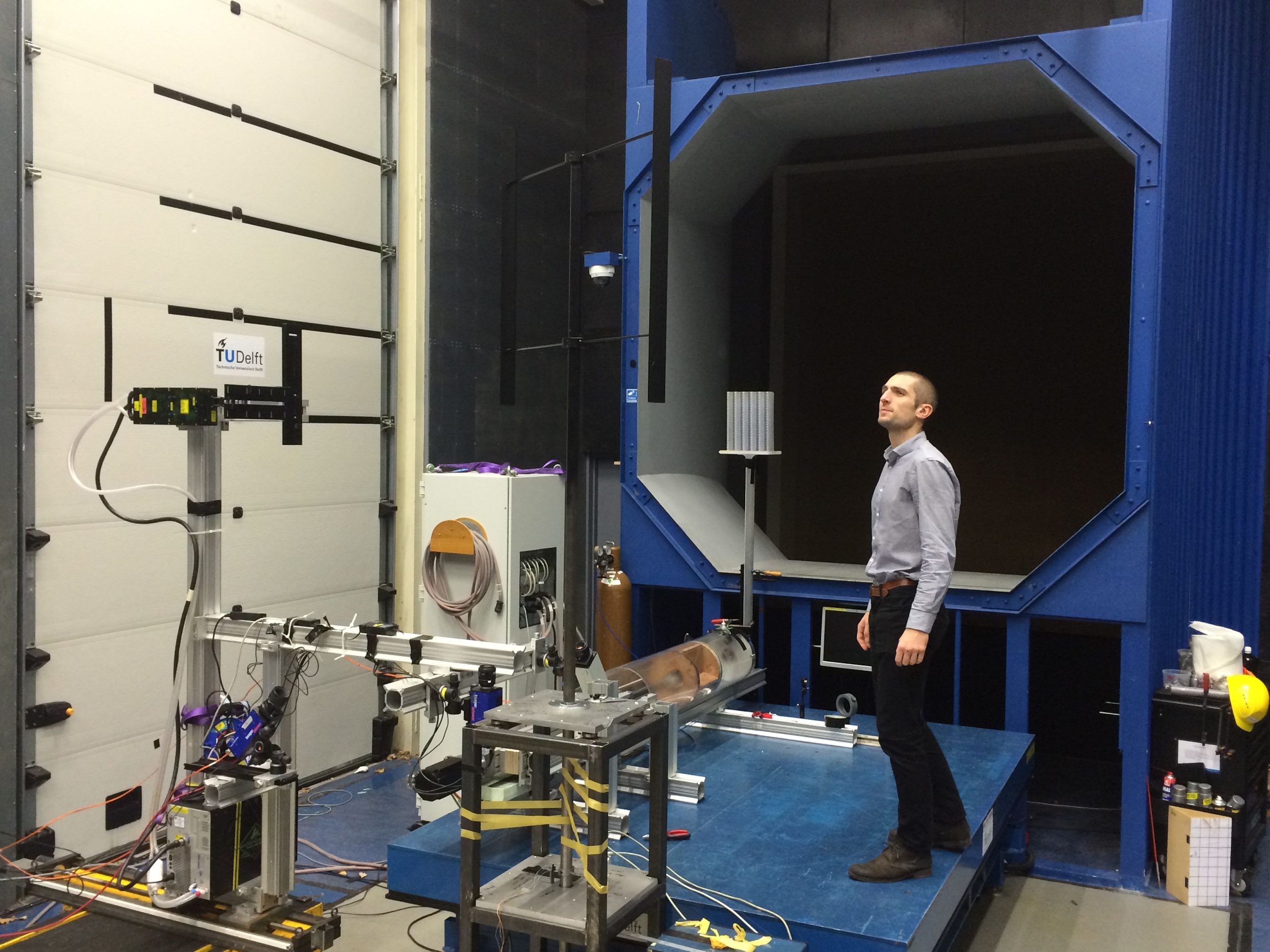A new technique that traces airflows with tiny soap bubbles has potential outside the wind tunnel as well. Dr. Scarano received a European proof of concept grant to find out
The FLOVISP project (Flow Visualisation Based Pressure) aims to measure pressures on an athlete’s body or the bodywork of a car by tracing the airflow around it. FLOVISP is a spin-off of a much larger research program called FLOVIST*. In the wake of this European funded program the volume in which airflows can be traced has been enlarged from the volume of an iPhone into that of a beer crate. Professor Fulvio Scarano (Aerospace Engineering) and his group received €150,000 to bring this new technology outside the wind tunnel an into a sports stadium.
Professor Scarano, who is a competitive runner, can imagine a ring of lasers or LED lights overarching the finish line and firing simultaneously when the athlete crosses the line and runs through a cloud of ultrafine mist. In a few milliseconds cameras and computers register the airflow around the athlete.
This ‘ring of fire’ concept sketches the technology the group is about to develop with Dr. Andrea Sciacchitano in charge of aerodynamic sport applications.
The technology is based on Scarano’s improvements of a technique called Particle Image Velocimetry or PIV. In 2008 he received a ERC grant to realise his FLOVIST project to trace airflows by reconstructing the trajectories of micro-sized droplets which light up under strong laser light. It was a challenge because of the tiny droplets, the laser power and the computational power required. The technology, originally aimed at localising propellor noise, worked. But only in small volumes of about 20 cubic centimetres (size of an iPhone).


Scaling up the volume requires larger droplets, but these don’t follow the airflow – they splat into the object just as the early morning mist wets the cyclists. There is an alternative where helium filled soap bubbles float nicely in the air and reflect enough of the laser light to increase volume. But a study from researchers Kerho and Bragg in 1994 had concluded the bubbles do not flow the airstream precisely enough. Since then, everyone had dropped the bubbles.
Scarano and his team resurrected the bubble technique by using much smaller bubbles (0.1 millimetre). They have shown that the tiny bubbles follow the flow just as well as the micron-sized droplets do. The amount of light they reflect however is 10 thousand times more. This allows for much larger scanning volumes. In the order of a beer crate, Sciacchitano estimates.
In the wind tunnel they’ve used this large-scale PIV to trace the flows around the blades of a vertical axis wind turbine (see video). The researchers collected bubbles in a large cylinder and pushed them out in batches to increase the bubble density in the airstream to useable values.
The development of a ‘ring of fire’ aims to bring tis technology from the wind tunnel into sports stadiums. Stay tuned for updates.
* – FLOVIST stands for Flow Visualization Inspired Aeroacoustics with Time-resolved Tomographic Particle Image Velocimetry.



Comments are closed.